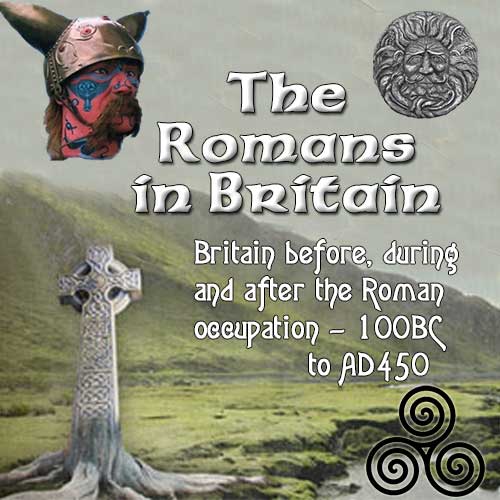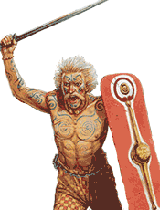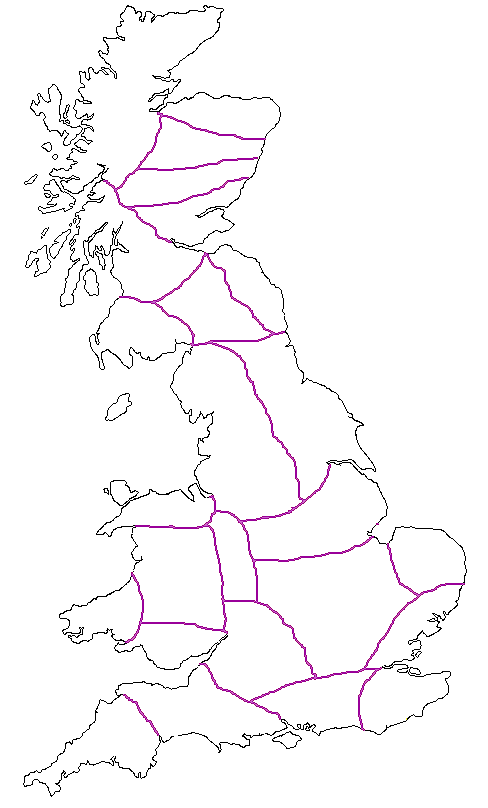The Iceni Tribe
Background to the Iceni
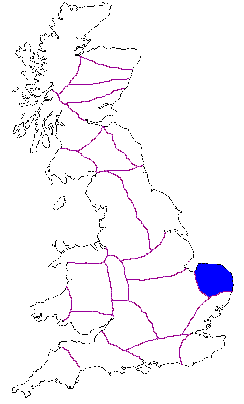 Location of the tribe
Location of the tribe
On the east coast of England where Norfolk now resides.
Background to the tribe
The Iceni were probably best known for Queen Boudicca, or Boadicea as she is also known, and the Boudiccan rebellion of 60/61AD.
The Iceni or Eceni were a British tribe who inhabited an area of East Anglia corresponding roughly to the modern-day county of Norfolk between the 1st century BC and the 1st century AD. They were bordered by the Corieltauvi to the west, and the Catuvellauni and Trinovantes to the south.
The Cenimagni, who surrendered to Julius Caesar during his second expedition to Britain in 54 BC, may have been a branch of the Iceni or it could be a corruption of Iceni Magni meaning "Great Iceni."
Archaeological evidence of the Iceni includes torcs — heavy rings of gold, silver or electrum worn around the neck and shoulders. The Iceni began producing coins circa 10 BC. Their coins were a distinctive adaptation of the Gallo-Belgic "face/horse" design, and in some early issues, most numerous near Norwich, the horse was replaced with a boar. Some coins are inscribed ECENI, making them the only coin-producing group to use their tribal name on coins. The earliest personal name to appear on coins is Antedios (ca. 10 BC), and other abbreviated names like AESU and SAEMU follow.
Sir Thomas Browne, the first English archaeological writer, said of the Roman occupation, Boudica and Iceni coins:
That Britain was notably populous is undeniable, from that expression of Caesar. That the Romans themselves were early in no small Numbers, Seventy Thousand with their associates slain by Bouadicea, affords a sure account... And no small number of silver pieces near Norwich; with a rude head upon the obverse, an ill-formed horse on the reverse, with the Inscriptions Ic. Duro.T. whether implying Iceni, Durotriges, Tascia, or Trinobantes, we leave to higher conjecture. The British Coyns afford conjecture of early habitation in these parts, though the city of Norwich arose from the ruins of Venta, and though perhaps not without some habitation before, was enlarged, built, and nominated by the Saxons.
The Icknield Way, an ancient trackway linking East Anglia to the Chilterns, may be named after the Iceni.
The Roman invasion
While the meaning of the name Iceni is unknown, it is tempting to see it as derived from a Proto-Celtic adjective cognate with Latin picea ‘pine tree,’ the Italic tribal name Piceni, English picene, and with the English hydronym Itchen. Icenian coins dating from the 1st century AD use the spelling ECEN, which probably suggests a different etymology.
Tacitus records that the Iceni were not conquered in the Claudian invasion of AD 43, but had come to a voluntary alliance with the Romans. However, they rose against them in 47 after the governor, Publius Ostorius Scapula, threatened to disarm them. The Iceni were defeated by Ostorius in a fierce battle at a fortified place, but were allowed to retain their independence. The site of the battle may have been Stonea Camp in Cambridgeshire.
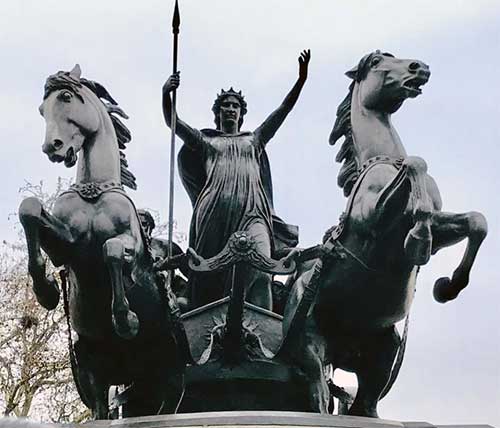
Statue of Boudica and Her Daughters is a bronze sculptural group located in London.
A second and more serious uprising took place in AD 61. Prasutagus, the wealthy, pro-Roman
Icenian king,
had died. It was common practice for a Roman client king to leave his kingdom to Rome on his
death, but
Prasutagus had attempted to preserve his line by bequeathing his kingdom jointly to the Emperor
and his
own daughters. The Romans ignored this, and the procurator Catus Decianus seized his entire
estate.
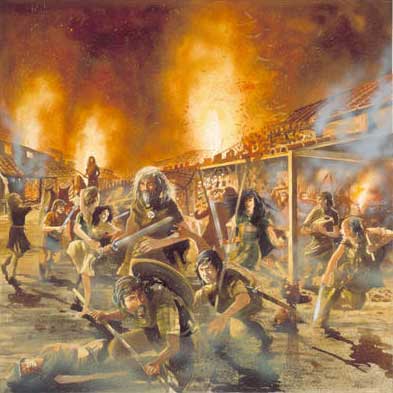 Prasutagus's widow, Boudica, was flogged, and her
daughters
were raped. At the same time, Roman financiers called in their loans. While the governor, Gaius
Suetonius Paulinus, was campaigning in
Wales, Boudica led the Iceni and the neighbouring Trinovantes in a large-scale revolt,
destroying and
looting Camulodunum (Colchester), Londinium (London) and Verulamium (St Albans) before finally
being
defeated by Suetonius Paulinus and his legions. Although the Britons outnumbered the Romans
greatly,
they lacked the superior discipline and tactics that won the Romans a decisive victory. The
battle
took place at an unknown location, probably in the West Midlands
somewhere along Watling Street. Today, a large statue of Boudica wielding a
sword and charging upon a chariot can be seen in London on the north bank of the Thames by
Westminster
Bridge.
Prasutagus's widow, Boudica, was flogged, and her
daughters
were raped. At the same time, Roman financiers called in their loans. While the governor, Gaius
Suetonius Paulinus, was campaigning in
Wales, Boudica led the Iceni and the neighbouring Trinovantes in a large-scale revolt,
destroying and
looting Camulodunum (Colchester), Londinium (London) and Verulamium (St Albans) before finally
being
defeated by Suetonius Paulinus and his legions. Although the Britons outnumbered the Romans
greatly,
they lacked the superior discipline and tactics that won the Romans a decisive victory. The
battle
took place at an unknown location, probably in the West Midlands
somewhere along Watling Street. Today, a large statue of Boudica wielding a
sword and charging upon a chariot can be seen in London on the north bank of the Thames by
Westminster
Bridge.
The Iceni are recorded as a civitas of Roman Britain in Ptolemy's Geographia which names Venta Icenorum as a town of theirs. Venta, which is also mentioned in the Ravenna Cosmography, and the Antonine Itinerary,was a settlement near the village of Caistor St. Edmund, some five miles south of present-day Norwich, and a mile or two from the Bronze Age Henge at Arminghall.
After the Romans left Britain, it is possible that some of the Iceni migrated west away from the Angles into the inhospitable marshlands around The Wash known as the Fens. The possibility of this occurrence is supported by the Life of Saint Guthlac — a biography written about the East Anglian religious hermit who lived in the Fens during the early 8th century — it is stated that Saint Guthlac was attacked by people he believed were Britons living in the Fens at that time, 200 years after the establishment of Anglo-Saxon kingdoms, although Bertram Colgrave in the introduction to The Life of Saint Guthlac states that is very unlikely due to the lack of evidence for British survival in the region and the fact that British placenames in the area are "very few".

